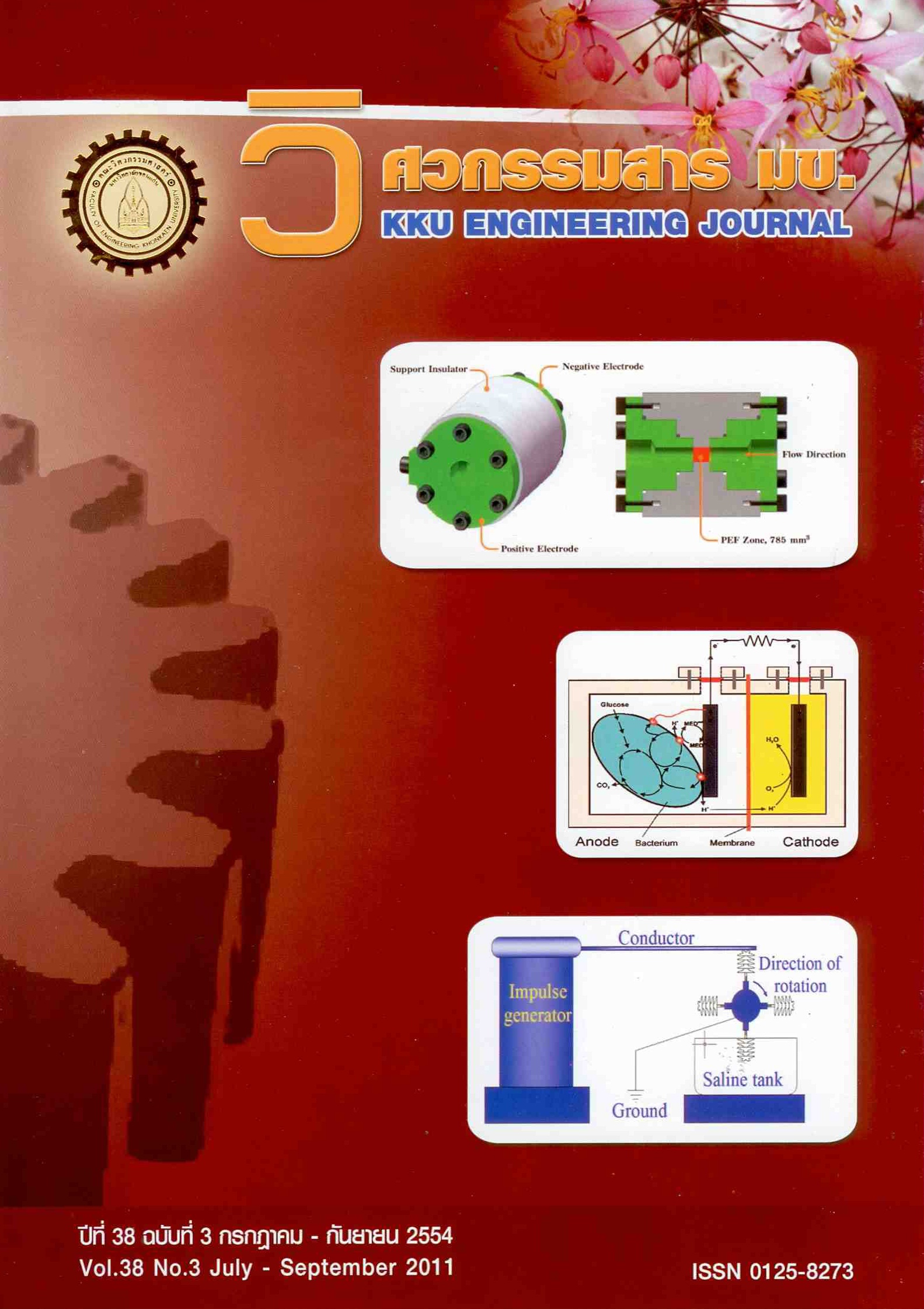Development of Decision-Making System for Allocating Cane Harvesting Laborers In Inbound Logistics of Sugar Cane and Sugar Industry
Main Article Content
Abstract
Agricultural industry is one of the significant industries contributing to Thai economic expansion.
Sugar cane and sugar industry both creates jobs and brings enormous revenues into the country. The
inbound logistics of sugar cane and sugar industry—from cane cultivation, harvest, transportation to factories,
and ground management in front of factories—is still found to lack continuity and efficient administration. As a
result, costs of investment are still a burden on both farmers and factories, and productivity is not very good.
The field survey conducted through interviewing farmers and factories revealed that one of the bottle-neck
problems causing flow intermittence in inbound logistics is cane harvesting, which, most of the part is done by
laborers in Thailand. The problem in this respect lies in management. On top of this, Thailand also sees
shortage of farm laborers at present due to their shifting to jobs in industrial and construction sectors. Hence,
if sugar cane harvest labor allocation is not efficient, the quantity of sugar cane produce sent to factories will
not be sufficient for factories’ daily requirement, and farmers’ incomes are inconsistent. This article presents a
systematic method to administer sugar cane harvest labor which is based on a mathematic model and a
heuristic problem solution, the so-called “Capacitated Clustering,” performed by means of “Spanning Tree.”
The objective was to minimize the distance of laborers transport from their camp to the cane plantation. The
distance obtained was compared to the real situation where farm laborers were allocated randomly by
considering only the amount of cane to be cut in each plantation without taking into account the distance from
camp and costs incurred. This comparative study was conducted statistically to see the difference in the
averages of two related population groups (Paired Samples t-test). The small-scale problem which was
solvable by a mathematical model was compared to the real situation and the result showed a significant
difference at 95%. The mathematical model yielded lower costs for all cases investigated. In order to study a
bigger problem, we compared the distance obtained from the developed heuristic and that of the real situation
by means of 22 Factorial Design. The result showed a 95% significant difference between the Capacitated
Clustering and the real situation. It was also found that plantation number and quotas affected the distance of
laborers transportation.
Sugar cane and sugar industry both creates jobs and brings enormous revenues into the country. The
inbound logistics of sugar cane and sugar industry—from cane cultivation, harvest, transportation to factories,
and ground management in front of factories—is still found to lack continuity and efficient administration. As a
result, costs of investment are still a burden on both farmers and factories, and productivity is not very good.
The field survey conducted through interviewing farmers and factories revealed that one of the bottle-neck
problems causing flow intermittence in inbound logistics is cane harvesting, which, most of the part is done by
laborers in Thailand. The problem in this respect lies in management. On top of this, Thailand also sees
shortage of farm laborers at present due to their shifting to jobs in industrial and construction sectors. Hence,
if sugar cane harvest labor allocation is not efficient, the quantity of sugar cane produce sent to factories will
not be sufficient for factories’ daily requirement, and farmers’ incomes are inconsistent. This article presents a
systematic method to administer sugar cane harvest labor which is based on a mathematic model and a
heuristic problem solution, the so-called “Capacitated Clustering,” performed by means of “Spanning Tree.”
The objective was to minimize the distance of laborers transport from their camp to the cane plantation. The
distance obtained was compared to the real situation where farm laborers were allocated randomly by
considering only the amount of cane to be cut in each plantation without taking into account the distance from
camp and costs incurred. This comparative study was conducted statistically to see the difference in the
averages of two related population groups (Paired Samples t-test). The small-scale problem which was
solvable by a mathematical model was compared to the real situation and the result showed a significant
difference at 95%. The mathematical model yielded lower costs for all cases investigated. In order to study a
bigger problem, we compared the distance obtained from the developed heuristic and that of the real situation
by means of 22 Factorial Design. The result showed a 95% significant difference between the Capacitated
Clustering and the real situation. It was also found that plantation number and quotas affected the distance of
laborers transportation.
Article Details
How to Cite
Chaibung, N., & Sethanan, K. (2013). Development of Decision-Making System for Allocating Cane Harvesting Laborers In Inbound Logistics of Sugar Cane and Sugar Industry. Engineering and Applied Science Research, 38(3), 275–284. retrieved from https://ph01.tci-thaijo.org/index.php/easr/article/view/7721
Issue
Section
ORIGINAL RESEARCH
This work is licensed under a Creative Commons Attribution-NonCommercial-NoDerivatives 4.0 International License.



